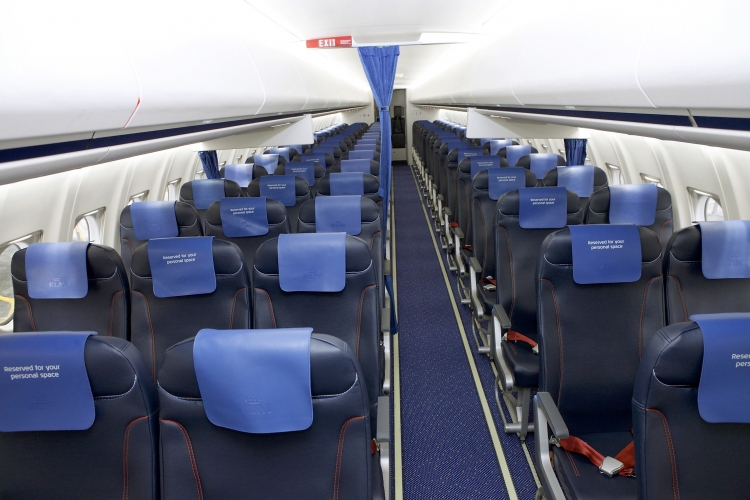The Fokker 70, a distinguished name in regional aviation, stands out for its efficiency, reliability, and versatility. Manufactured by the renowned Dutch aircraft company, Fokker, this aircraft has served various airlines and private operators since its introduction in the 1990s. With a focus on short to medium-haul flights, the Fokker 70 has cemented its place in aviation history. This article delves into the specifics, capabilities, and lasting appeal of the Fokker 70.
Overview of the Fokker 70
The Fokker 70 is a twin-engine, narrow-body jet airliner, specifically designed to meet the needs of regional air travel. It was first flown on April 4, 1993, and entered service with the Dutch airline KLM Cityhopper in 1994. The aircraft was developed as a shorter version of the Fokker 100, with a focus on providing similar performance characteristics but with reduced passenger capacity.

KLM Cityhopper Foker 70
Technical Specifications
Understanding the technical specifications of the Fokker 70 is crucial for appreciating its capabilities:
- Length: 30.91 meters (101 feet 5 inches)
- Wingspan: 28.08 meters (92 feet 1 inch)
- Height: 8.51 meters (27 feet 11 inches)
- Cabin Width: 3.30 meters (10 feet 10 inches)
- Max Takeoff Weight (MTOW): 37,995 kg (83,772 lbs)
- Maximum Range: 3,400 kilometers (2,113 miles) with maximum payload
- Cruise Speed: 845 km/h (525 mph)
- Engines: Two Rolls-Royce Tay 620-15 turbofans
- Seating Capacity: Typically seats 80 passengers in a single-class configuration
The Fokker 70 Advantage
One of the key highlights of the Fokker 70 is its fuel efficiency. The aircraft’s advanced aerodynamics and lightweight structure contribute to lower operating costs, making it an attractive option for airlines focused on cost-effectiveness. The Fokker 70’s ability to operate from short runways also enhances its versatility, allowing it to serve airports with limited infrastructure.

Comfort and Passenger Experience
The Fokker 70 is designed to provide a comfortable flying experience. The aircraft’s cabin, with its 2-3 seating configuration, offers ample legroom and overhead storage. Noise reduction features and a well-pressurized cabin ensure a pleasant journey for passengers. Additionally, the Fokker 70’s smooth and stable flight characteristics contribute to overall passenger satisfaction.
Operational History
Since its introduction, the Fokker 70 has been employed by numerous airlines around the world. Notably, KLM Cityhopper, Austrian Airlines, and Alliance Airlines have utilized this aircraft extensively. The Fokker 70’s reliability and ease of maintenance have made it a favored choice for both scheduled passenger services and charter operations.

Market Position and Legacy
In the competitive regional aircraft market, the Fokker 70 holds a unique position. Its blend of performance, efficiency, and comfort has allowed it to maintain relevance even as newer models have emerged. The aircraft’s robust design and proven track record ensure that many Fokker 70s remain in operation today, continuing to serve regional routes efficiently.
The Enduring Appeal of the Fokker 70
The Fokker 70 remains a testament to Dutch engineering prowess in the aviation industry. Its balanced combination of performance, efficiency, and passenger comfort has secured its place as a reliable workhorse for regional air travel. As airlines continue to seek dependable and cost-effective solutions, the Fokker 70’s enduring legacy is a testament to its exceptional design and functionality.


